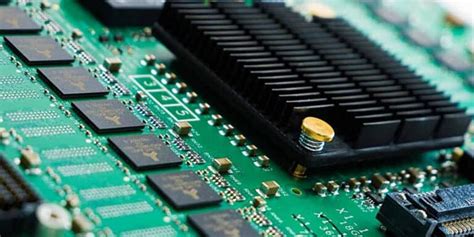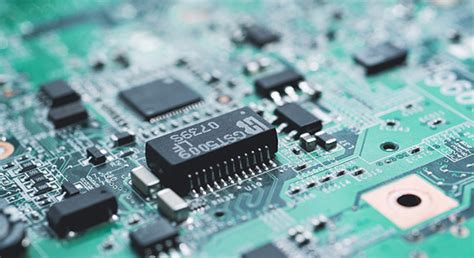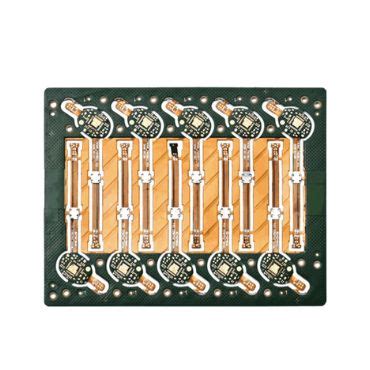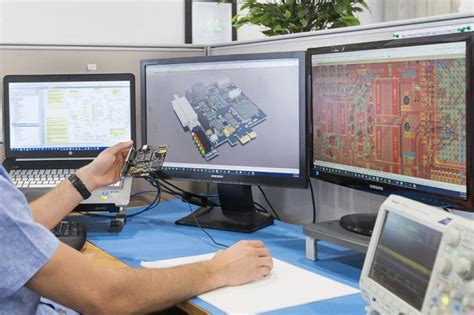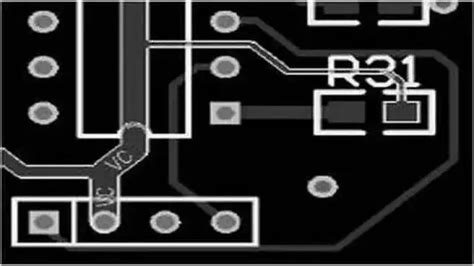Revolutionizing Aerospace: Innovations in PCB Assembly Technology
Key Takeaways
The landscape of aerospace PCB assembly is witnessing transformative changes that promise to redefine industry standards. Advanced PCBA techniques are not only enhancing the efficiency of manufacturing processes but also significantly reducing costs associated with production. Through the integration of state-of-the-art materials and machinery, manufacturers are achieving heightened levels of precision and speed in pcb assembly, which ultimately contributes to more reliable aerospace components. Furthermore, these innovations are ensuring that safety remains a paramount concern, with stringent testing and quality assurance protocols being implemented throughout the manufacturing lifecycle. As technology evolves, the potential for reduced lead times and improved scalability of production processes suggests a bright future for the industry. The embrace of these advancements is crucial for companies looking to maintain competitive advantages while addressing the growing demands for sustainability and innovation in aerospace engineering.
Introduction to Aerospace PCB Assembly
In the rapidly evolving field of aerospace engineering, the significance of PCB assembly (Printed Circuit Board Assembly) has become increasingly prominent. The integration of pcba technologies has revolutionized the way electronic systems are designed, manufactured, and maintained in aircraft and spacecraft. Aerospace PCB assembly involves intricate processes and specialized materials designed to withstand extreme conditions, including high temperatures and vibrations. This sector demands exceptional precision and reliability as even minor failures can have catastrophic consequences. Modern innovations in this area not only enhance performance but also contribute to heightened safety measures, making it imperative for manufacturers to adopt advanced PCB techniques. The use of automated assembly processes and innovative design methodologies ensures that pcba solutions are not only efficient but also cost-effective in meeting stringent aerospace standards. By focusing on quality control and thorough testing protocols, aerospace manufacturers can ensure that their PCB assembly systems comply with regulatory requirements while pushing the boundaries of technology forward. Overall, aerospace pcba stands as a cornerstone of innovation that shapes the future landscape of aerospace engineering and manufacturing.
Key Innovations Transforming PCB Assembly Technology
The aerospace industry is experiencing a significant transformation through the integration of innovative PCB assembly techniques. One of the key advancements is the shift towards automated processes that streamline production and reduce human error. This automation enhances not only the speed but also the precision of PCBA, ensuring that intricate designs meet stringent aerospace standards. Furthermore, the introduction of advanced materials in pcb assembly is revolutionizing product outcomes. New materials are designed to withstand extreme conditions, thus significantly improving the durability and reliability of aerospace components. Moreover, innovations such as robotic soldering and advanced inspection technologies are paving the way for enhanced quality control, minimizing defects and ensuring consistent performance in critical applications. These technological advancements not only bolster production efficiency but also contribute to meeting regulatory compliance demands, ultimately positioning aerospace manufacturers to meet future challenges head-on. With these continuous improvements in PCBA, the aerospace sector is poised for a new era marked by heightened reliability and reduced operational costs, showcasing how innovation drives progress within this pivotal industry.
Enhancing Efficiency in Aerospace Manufacturing
In the evolving landscape of aerospace manufacturing, pcb assembly plays a pivotal role in increasing operational efficiency. Advanced PCBA technologies streamline the production process, reducing lead times and minimizing material waste. One of the key factors contributing to this enhancement is the incorporation of automated assembly techniques, which not only expedite the manufacturing process but also improve accuracy and reduce human error. By implementing state-of-the-art inspection systems, manufacturers can achieve rigorous quality control, ensuring that every component meets the highest standards of reliability required in aerospace applications. Furthermore, the use of flexible manufacturing solutions allows for quicker adjustments to production lines during varying demand cycles, enabling companies to maintain an agile approach in an ever-changing market. As a result, these innovations not only bolster productivity but also foster a culture of continuous improvement that is essential for sustaining competitiveness in the aerospace sector. Overall, these advancements in pcb assembly are instrumental in redefining efficiencies within aerospace manufacturing processes, ultimately contributing to safer and more reliable aircraft designs.
Cost Reduction Strategies through Advanced PCB Techniques
The adoption of advanced PCB assembly techniques in the aerospace sector represents a critical step toward achieving significant cost reduction. By integrating automated processes and optimizing the design of PCBA (Printed Circuit Board Assembly), manufacturers can streamline production workflows. For instance, the implementation of surface mount technology allows for denser component placement, minimizing both board size and material costs. Moreover, leveraging advanced simulations during the PCB assembly design phase can reduce prototyping costs and shorten time-to-market.
| Technique | Impact on Cost | Benefit |
|---|---|---|
| Automated Optical Inspection | Reduces rework costs | Improves detection of defects |
| Surface Mount Technology | Minimizes material usage | Enhances space efficiency |
| Design for Manufacturability (DFM) | Lowers assembly costs | Simplifies production |
Additionally, employing lean manufacturing principles within the PCB assembly process can lead to waste minimization and more effective resource allocation. These strategies not only foster better operational efficiency but also support sustainability goals by reducing excess materials and energy consumption. As aerospace companies continue to innovate with their PCBA techniques, the emphasis on cost-effective solutions will likely drive further advancements in technology, ensuring reliable performance in even the most demanding applications.
Ensuring Reliability and Safety in Aerospace Applications
In the realm of aerospace, the reliability and safety of components are paramount, particularly in PCB assembly processes that support complex systems. The PCBA industry is evolving to incorporate advanced technologies, such as automated optical inspection and advanced testing methodologies. These innovations play a crucial role in identifying potential defects early in the manufacturing process, thus mitigating risks that could jeopardize safety. Moreover, implementing robust quality control measures ensures that each pcb assembly meets rigorous industry standards. For example, adopting lead-free soldering techniques enhances durability and reduces the likelihood of failures due to thermal stress during operations at high altitudes.
“Consistency in quality is as important as functionality when it comes to aerospace applications.”
Additionally, leveraging predictive analytics can help manufacturers foresee potential issues related to component failures before they occur. By utilizing data from previous PCBA projects, organizations can improve their designs and manufacturing techniques based on solid empirical evidence. This data-driven approach does not only bolster reliability but also significantly enhances overall safety for passengers and crew alike. Thus, ensuring reliability and safety in aerospace applications through stringent PCB assembly practices lays a strong foundation for the future of the industry.
Future Trends in Aerospace PCB Assembly Technology
As the aerospace industry experiences rapid technological advancements, the future of PCB assembly (PCBA) technology is set to transform significantly. Emerging trends suggest a pivot toward automation and smart manufacturing, where robotic systems and artificial intelligence enhance production efficiency while minimizing human error. This technological shift enables aerospace manufacturers to meet increasing demands for precision and speed in component assembly. Furthermore, the integration of advanced materials, such as lighter yet more durable substrates, is gaining traction. These materials not only improve the performance of aerospace devices but also contribute to cost reduction by streamlining the production process. Additionally, the rise of miniaturization in electronic components necessitates innovative PCB designs that maximize space usage without compromising functionality. As these trends unfold, they bring about a new era of reliability and efficacy in aerospace PCBA, setting a robust foundation for future growth and innovation in this critical sector.
Case Studies: Successful Implementations of Innovative PCB Solutions
Across the aerospace industry, numerous organizations have successfully adopted pcb assembly techniques that showcase the transformative potential of modern technology. One prominent case is the implementation of automated pcba processes at a leading aerospace manufacturer, which dramatically improved production timelines. By integrating advanced robotics and machine learning algorithms, the company achieved a 30% reduction in assembly time while enhancing precision and accuracy. Additionally, a notable project focused on miniaturization techniques in pcb assembly, allowing for more compact electronic systems that fit seamlessly into limited space aboard aircraft. This innovation not only streamlined design but also reduced overall material costs by 25%, demonstrating a significant advancement in economic efficiency. Furthermore, another study illustrates how innovative pcba testing methods have minimized failure rates during crucial phases of production, thereby bolstering reliability and ensuring safety in critical aerospace applications. These case studies highlight the impact that creative approaches to pcb assembly are having on the industry, paving the way for future enhancements and robust solutions tailored to meet evolving demands in aerospace engineering.
Conclusion: The Impact of PCB Assembly Innovations on the Aerospace Industry
In recent years, advancements in pcb assembly technology have had a profound impact on the aerospace industry, ushering in a new era of efficiency and reliability. The integration of cutting-edge practices in pcba not only streamlines manufacturing processes but also significantly reduces production costs. By employing innovative techniques, manufacturers can enhance the performance and safety of aerospace components. Furthermore, these technological breakthroughs ensure that systems meet stringent regulatory standards, thereby reinforcing trust within the industry. As we look to the future, we can anticipate that these innovations will continue to shape the landscape of aerospace engineering, leading to ever more advanced and reliable systems that push the boundaries of what is possible in air travel. Keeping pace with these developments is essential for stakeholders aiming to remain competitive in a rapidly evolving market, making pcb assembly techniques vital for sustainable progress.
Conclusion: The Impact of PCB Assembly Innovations on the Aerospace Industry
In summary, the evolution of PCBA technology has profound implications for the aerospace sector. As aerospace companies increasingly rely on printed circuit board assembly, innovations in this field are not only enhancing manufacturing processes but also contributing to design flexibility and improved product reliability. The integration of advanced materials, automated techniques, and sophisticated design software has streamlined the PCB assembly process, enabling manufacturers to produce lighter, more efficient components that can withstand the extreme conditions often encountered in aerospace applications. Furthermore, these advancements help reduce production costs while maintaining high safety standards, which are paramount in aviation. As we look ahead, it is clear that ongoing research and development in PCBA will continue to play a critical role in shaping the future of aerospace technology, creating a ripple effect that will enhance overall industry performance and innovation.
FAQs
What is PCB assembly in the aerospace industry?
PCB assembly (or PCBA) refers to the process of creating electronic circuits by mounting components onto printed circuit boards (PCBs) specifically designed for aerospace applications. This process is critical for ensuring functionality and reliability in aviation technology.
How does advanced PCB assembly technology improve efficiency?
Innovative pcba techniques streamline manufacturing processes, reduce manual labor, and enhance precision in component placement. This leads to faster production timelines and increased throughput.
What are the cost-saving benefits of modern PCBA techniques?
Modern advancements help companies minimize waste, improve material utilization, and lower manufacturing costs. By adopting such technologies, aerospace manufacturers can remain competitive while maintaining high-quality standards.
How do aerospace manufacturers ensure reliability in PCB assembly?
Through rigorous testing methods and enhanced materials, manufacturers can significantly increase the durability and reliability of printed circuit boards. Standards such as IPC-A-610 guide them in achieving high-quality assemblies that meet stringent safety requirements.
What are some future trends in aerospace PCB assembly technology?
Emerging trends include greater integration of automation, the use of advanced materials for lightweight designs, and improvements in thermal management solutions. These developments aim to enhance performance and meet evolving aerospace demands.
For more detailed insights into how PCB assembly is transforming the aerospace sector, please click here: Andwin PCB Assembly.

